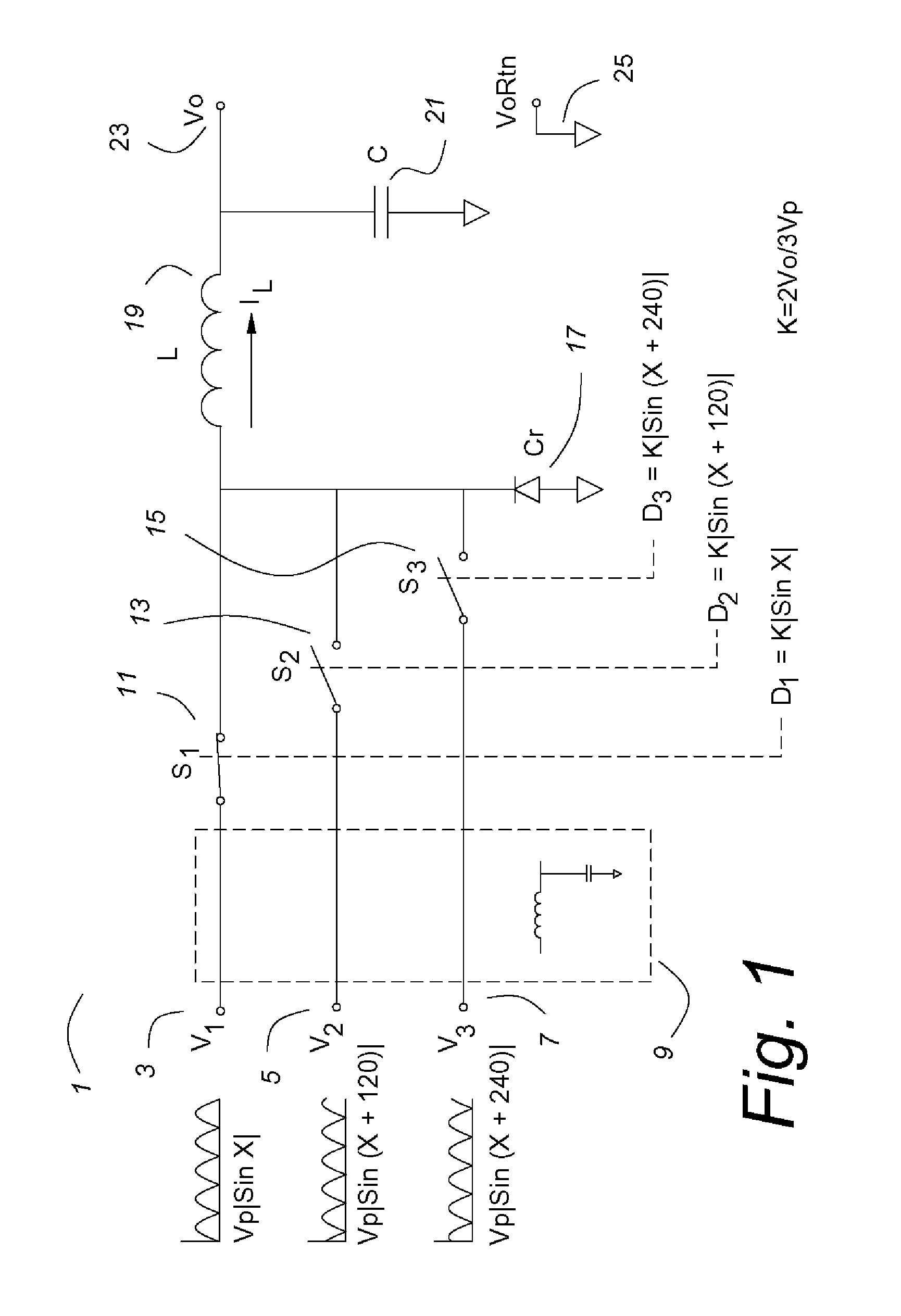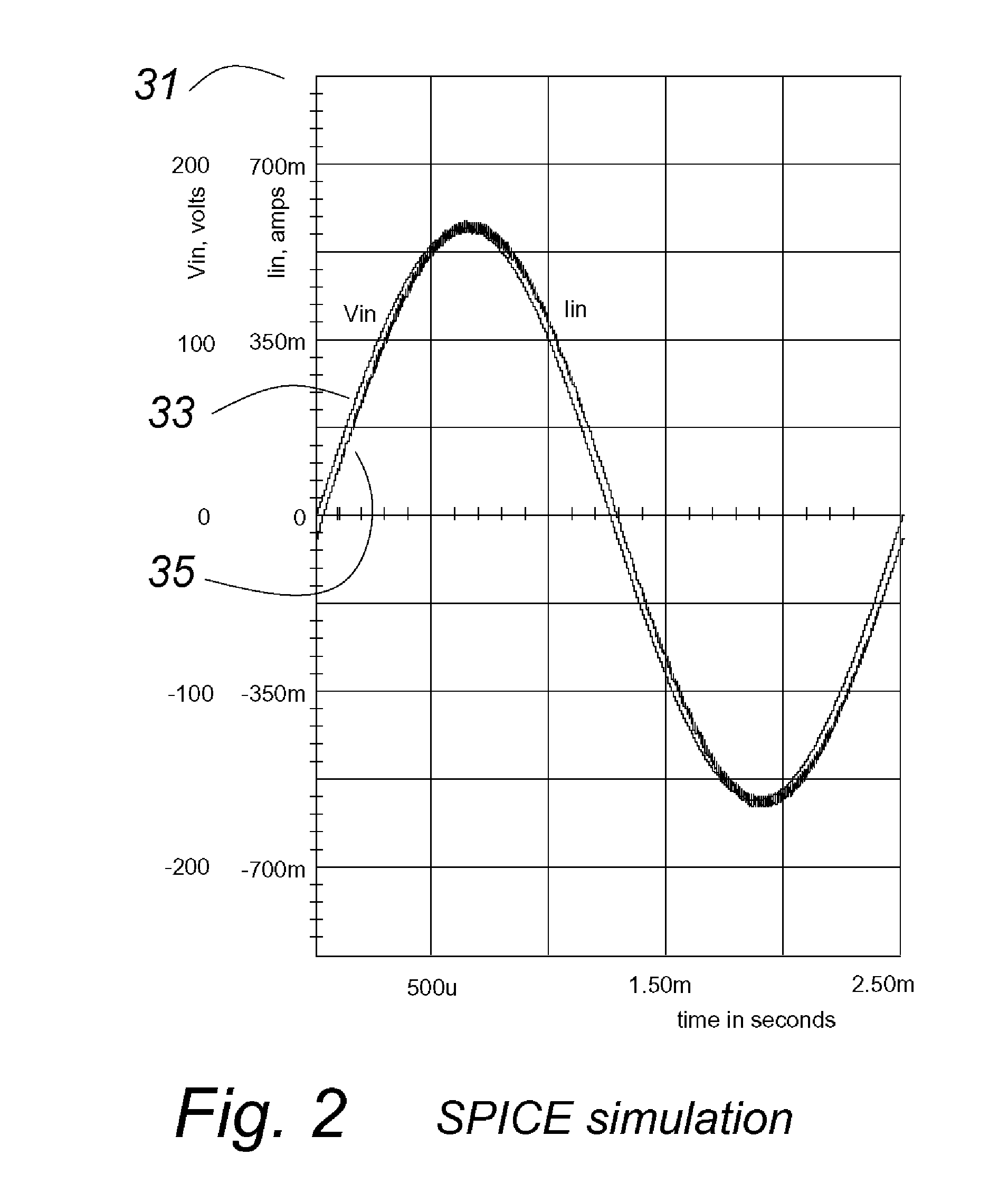Three phase buck power converters having input current control
a power converter and input current technology, applied in the field of power converters, can solve the problems of large inrush current, notoriously slow response of three phase power converters with power factor correction
- Summary
- Abstract
- Description
- Claims
- Application Information
AI Technical Summary
Benefits of technology
Problems solved by technology
Method used
Image
Examples
Embodiment Construction
[0069]FIG. 1 shows the basic parts of a three phase buck converter 1 having power factor correction. The three input voltages V13, V25 and V3 are full wave rectified three phase sine waves having a peak magnitude Vp. An input filter 9 is shown with no detail. As with any buck inverter, the input must be filtered to prevent the high frequency current pulses from propagating, for emi (electromagnetic interference) reasons as well as to present a very low impedance to the buck converter at the pwm (pulse width modulation) frequency. The design and application of input filters is well know to one skilled in the art of power converters and could be designed and applied without undue experimentation, but would vary widely depending upon the requirements of a particular application. In this specification and the claims, any recitation of a three phase ac voltage source (or load, in the case of the boost variant) includes filtering as necessary and appropriate for a particular application. ...
PUM
 Login to View More
Login to View More Abstract
Description
Claims
Application Information
 Login to View More
Login to View More - R&D
- Intellectual Property
- Life Sciences
- Materials
- Tech Scout
- Unparalleled Data Quality
- Higher Quality Content
- 60% Fewer Hallucinations
Browse by: Latest US Patents, China's latest patents, Technical Efficacy Thesaurus, Application Domain, Technology Topic, Popular Technical Reports.
© 2025 PatSnap. All rights reserved.Legal|Privacy policy|Modern Slavery Act Transparency Statement|Sitemap|About US| Contact US: help@patsnap.com



